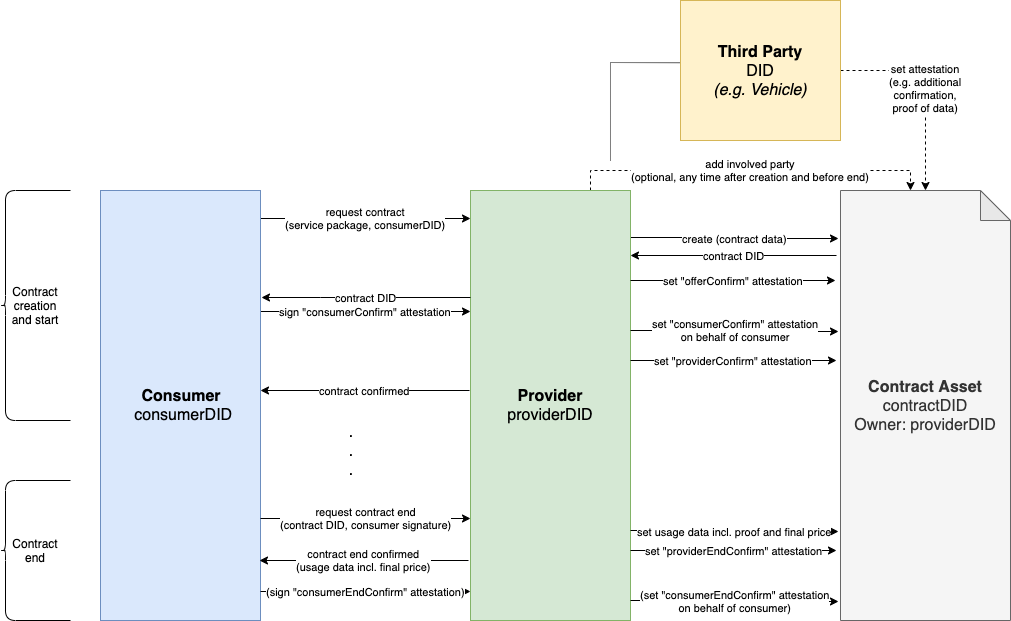BloXmove Dev : Generalized Contracting Flow
Single Contract
Based on the asset and attestation concept described in the Core mechanisms , the basic contracting flow consists of the following assets (all represented by DID) and a series of attestations:
-
Consumer: requesting and consuming a service
-
Provider: offering and granting a service
-
Contract asset: created by the provider who then becomes the owner of the asset, having a mandatory contractData property containing information about the content of the contract
-
Optional third party assets: additional parties involved in a contract, e.g. the vehicle asset in a rental contract
The flow and attestations are depicted in the following diagram:

Contract creation and start
-
Consumer requests a contract indicating the service it wants to book and its consumer DID
-
Provider validates the request and creates a contract with the required contract data, after creation receives the DID of the new contract asset
-
Provider sets a offerConfirm attestation on the contract asset
-
Provider returns contract DID to Consumer
-
Consumer signs consumerConfirm attestation on the contract asset and sends it to Provider
-
Provider validates consumerConfirm attestation and sets it on behalf of the Consumer
-
Provider sets providerConfirm attestation on the contract asset
-
Optional: Provider adds further involved parties to the contract asset, involved parties can then also set attestations to the contract asset
With all above required attestations in place, the contract is confirmed and active.
Contract end
-
Consumer requests end of contract indicating the contract DID and a Consumer signature
-
Provider validates Consumer signature, determines usage data including an optional proof of the data (like signatures or hashes of raw data) and final price, sets the usage data in the contract asset
-
Provider sets providerEndConfirm attestation on the contract asset, returns usage data to Consumer
-
Optional: Consumer signs consumerEndConfirm attestation on the contract asset and sends it to Provider
-
Optional: Provider validates consumerEndConfirm attestation and sets in on behalf of the Consumer
Combining Contracts
This generalised flow of a contract start and end can now be applied in many different scenarios, including combinations of contracts in various ways, e.g. in a B2C + B2B backfill scenario as the following:

-
User A requests a contract from MSP B, resulting in Contract A ↔︎ B with User A as the Consumer and _MSP B _as the Provider.
-
To fulfil the duties towards User A, MSP B requests another contract from Fleet Owner C, resulting in a Contract B ↔︎ C with MSP B as the Consumer and Fleet Owner C as the Provider.
-
Contract A ↔︎ B may have an optional reference to Contract B ↔︎ C (alternatively MSP B could store a mapping of related contracts within its own backend)
-
The classification B2C vs. B2B is only relevant from a business perspective, technically both contracts are the same and follow the same flow.


